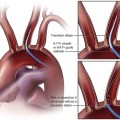Jeff Dai-Chee Tam, Mark F. Given, Stuart M. Lyon and Kenneth R. Thomson In the absence of trauma, acute upper limb arterial disease is relatively uncommon, particularly in comparison with lower limb disease. Some authors suggest that it is one sixth as common as that in the leg.1 The majority of patients will have small vessel disease.2 Blunt trauma and repetitive use of the arm—for example, in athletes or associated with certain occupations—are the usual causes in the proximal upper extremity.3,4 More distal upper limb ischemia is usually the result of emboli from a proximal stenosis or a cardiac origin. Occlusive disease of the upper extremity is as important as lower limb occlusive disease, not least because it may reflect an underlying systemic illness.5,6 Atherosclerotic disease is the most common cause of large vessel stenosis or occlusion, but it may also present as small vessel occlusion via thromboembolism. Aneurysmal disease, including cystic adventitial disease, may also be a source of emboli.7 Other primary causes include thoracic outlet compression syndrome, drug-induced occlusion, post-radiotherapy stenoses, and iatrogenic catheter injury.5,8,9 • J and hydrophilic angled guidewires • Pigtail, Hinck, Davis-T, Simmons catheters • Progreat microcatheter system (Terumo, Somerset, N.J.) • Angioplasty balloons (4- to 10-mm diameter) • Self- or balloon-expandable stents • Mechanical thrombectomy device or balloon thrombectomy catheter • Drugs: anticoagulants, thrombolytics, antispasmodics
Acute Arterial Occlusive Disease of the Upper Extremity
Equipment
Radiology Key
Fastest Radiology Insight Engine









